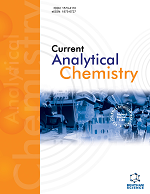
Full text loading...

Angelica glauca (AG) (family Apiaceae) is used by tribes as a spice and to treat various diseases. Before consumption, effective measures must be used for quality control tests. This study establishes quality standards for A. glauca. The study analyses A. glauca roots for physico-chemical, pharmacognostic, phytochemical, heavy metals, pesticidal residue, microbial load, and aflatoxin.
The standard procedure was used for powder microscopy and physiochemical parameters. Multiple culture media were used to measure microbial load. Aflatoxins were estimated using HPLC. Mercury, arsenic, lead, cadmium, chromium, and nickel were estimated using graphite furnace atomic absorption spectrometry. To identify 87 pesticide residues in A. glauca roots, LC-MS was used.
On root powder microscopy, parenchymatous cells packed with yellow material, capillaries with reticulate thickenings, and simple oval to circular starch grains were found. Foreign matter, LOD, total ash, and extractive values were all within range. Salmonela, Pseudomnas, and Coliform (E. coli) were absent. The total viable aerobic bacterial count was 1.14 x 103 cfu/ml, compared to 1.0 x 105 permitted. Aflatoxins were absent in all samples. Heavy metal levels met the FSSR 2011 maximum residue standard for foods not specified. All 87 pesticides in the crude sample were below detection limits, indicating the safety and quality of the A. glauca root sample.
The current findings can be utilized in quality control procedures and to assess the quality of A. glauca samples before incorporating them into formulations. Phytochemical tests, heavy metal analysis, and pesticide residue contents can be used to assess quality before using A. glauca raw materials.